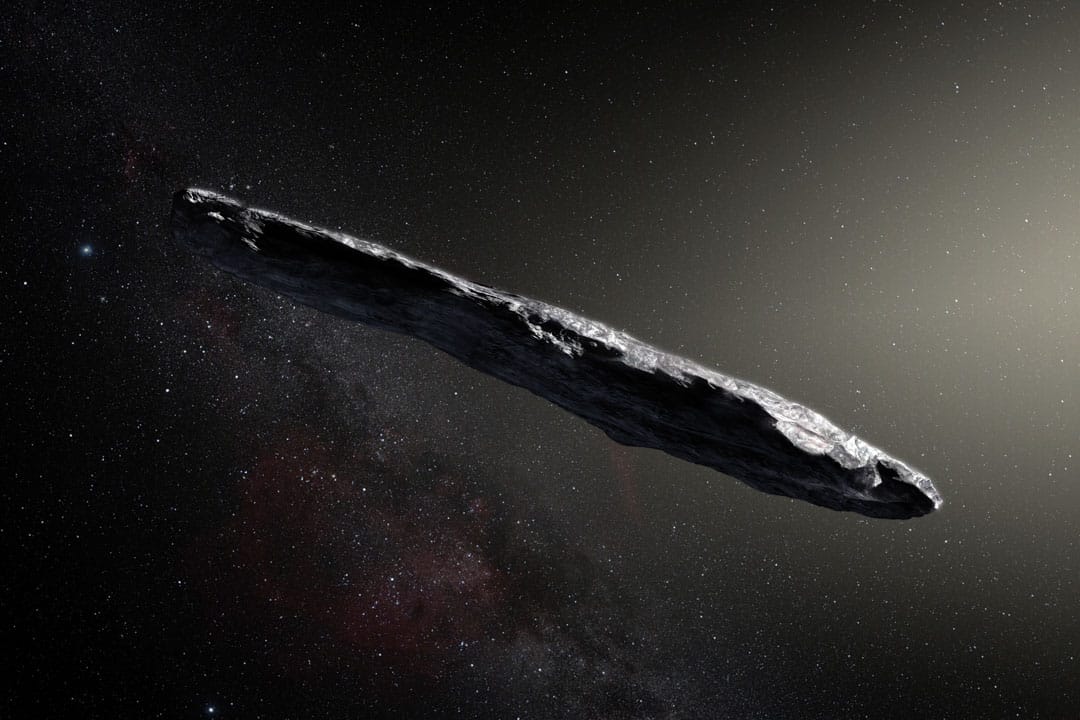Our nearest neighbouring star, Proxima Centauri, is 1.302 parsecs away. That is 4.24 light years, 40.21 trillion kilometres, or more than 45 million years of driving at Highway 401’s speed limit. To quote Douglas Adams, “Space is big. Really big.”
While no human will brave the mind-boggling emptiness between star systems in the near future, a recent alien visitor — designated 1I/2017 U1 — did just that. Making headlines this past October, the space rock, called ‘Oumuamua, from the Hawaiian word for ‘scout,’ was the first interstellar object to ever be detected within our solar system. A team of U of T astronomers have a hypothesis about where this particular ET calls home.
Although ‘Oumuamua is occasionally called an asteroid, by strict definition, asteroids originate within our solar system and are designated with an ‘A.’ The distinction of being the first interstellar object ever detected is what netted ‘Oumuamua its unique ‘1I’ designation.
In a study published in the Monthly Notices of the Royal Astronomical Society, researchers from UTSC’s Centre for Planetary Sciences concluded that small objects like ‘Oumuamua are most likely to be catapulted from their stars’ orbit by the influence of another massive orbiting body. In our solar system, the largest planets of Jupiter, Saturn, Uranus, and Neptune all qualify as potential candidates.
Objects affected by planets like Uranus and Neptune, the two planets orbiting furthest from our sun, would be covered in ice due to being so far away from their star’s heat. ‘Oumuamua has a visible rocky surface, and thus probably originated closer to its parent star.
This leads to further complications: potential influencing bodies that close to a star would have to be much larger than Saturn to catapult ‘Oumuamua in the time-frame that it left. This leaves Jupiter as a potential equivalent candidate, but Jupiter-like planets have been shown to be quite rare.
The most plausible possibility remaining is that ‘Oumuamua came from a binary star system: a system of two stars that are, in a sense, orbiting each other.
“It is from probabilities that we argued that ‘Oumuamua most likely came from a binary system,” wrote Dr. Alan Jackson, lead author of the paper, in an email to The Varsity. “Single star systems like our own will eject a small number of rocky asteroids, but binary systems should be much more efficient at ejecting rocky material, so that it is much more likely that ‘Oumuamua came from a binary system.”
With the question of its origin probably solved, the authors close their paper with a call for future research on unexplained facets of ‘Oumuamua, such as its bizarre shape.
In the meantime, Jackson believes that the future study of interstellar objects looks promising. “For me I think just the fact that this is a rock that formed around another star system, and likely one rather different from our own according to our work, is in itself pretty amazing. When the next generation of telescopic surveys come online we should be able to find more objects like this, and that will help us to understand how planets form in other systems.
“We might even one day be able to send a spacecraft to an object like ‘Oumuamua while it is on its way through the solar system and bring back a sample of rock from another star system.”


